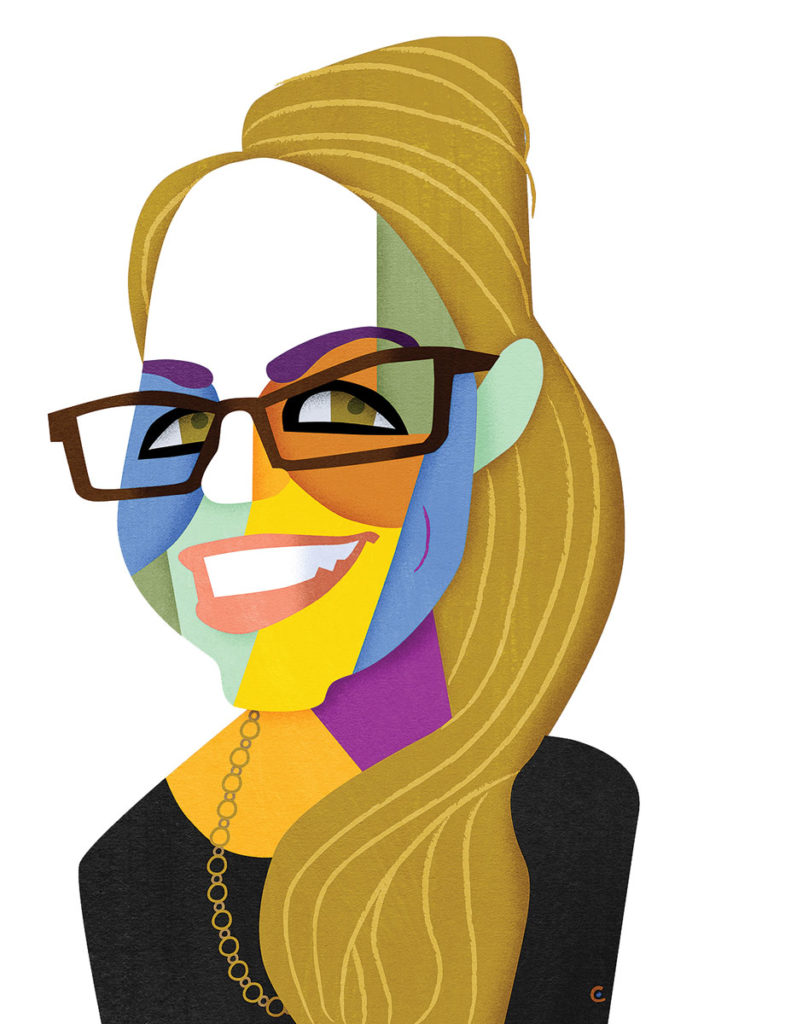Teaching and Learning about American Indians
Teaching and Learning about American Indians

(Photo: David Cowles for Rochester Review)
What should schools teach about American Indians? Working with native communities, the Smithsonian’s MaryBeth Yerdon ’13W (MS) is helping lead that conversation.
There’s a lot of debate in the country, and I think it’s getting especially heated now, about whose history is taught. What is the story of America, and how do we teach it? What do we tell young people about it?
It’s not a secret that most curricula about US history favor a Euro-American perspective.That’s the story that dominates textbooks, and that’s the story that dominates content that is presented on standardized tests.
Things get left out, and topics about American Indians are left out pretty often. And then, of course, the stories that are told are really relegated to just a few.There’s the Trail of Tears, which we like to call Removal; Pocahontas; Thanksgiving; the Battle of Little Big Horn. Extending education beyond those few narratives is one of the biggest challenges we come up against as a museum.
Native Knowledge 360°, or NK360°, is a national education initiative developed by NMAI [Smithsonian National Museum of the American Indian]. It was developed over the course of a couple of years and demonstrates how NMAI has really pioneered involvement in, and is committed to, formal education. The museum has said, things are being taught about American Indians that aren’t accurate, there’s a lot that’s being left out of the curriculum, and we need to do something about that. NK360° developed out of that mentality.
Working with native communities and teachers, we started by developing some essential understandings. First among those is the idea of diversity among American Indian tribes and nations. There is no single American Indian history, culture, or language. There are more than 2,000 tribal groups in the Americas and 562 federally recognized tribes right here in the United States. That means that native perspectives on history and culture are quite diverse.
Another essential understanding is that American Indians are citizens of their tribal nations, and they are also citizens of the United States. That’s something that a lot of kids don’t grow up knowing. They don’t grow up thinking about tribes as sovereign nations within the US, which is also a nation.
NK360° uses an inquiry-based model. Inquiry-based instruction focuses on asking kids compelling questions and having them come to evidence-based arguments in response to those questions. It’s pushing teachers away from rote memorization. For example, rather than asking kids to remember when the American Revolution was, the question would be, was the American Revolution revolutionary? And the kids would develop an evidence-based response to that question.
We’re continually developing new materials for teachers and have moved onto the stage of the project that involves training teachers. We’re doing presentations about our materials, running workshops at our museums in D.C. and New York, offering a paid residency program for teachers, and holding a free institute in the summer. Teachers come to D.C. for a week of intensive instruction on teaching about American Indians and using the inquiry design model.
We’re really trying to build a network of teachers and native experts who partner with us and help us in what we do, and whom we can help with their needs in the classroom. We’re the Smithsonian, so fortunately, we have a lot of experts in-house. We also have the name recognition to partner with scholars as well as native communities and leaders. The Smithsonian just has a massive reach. We have the means to do what we’re doing, and it’s great to be part of a team that is dedicated to such an important endeavor.
This story originally appeared in the fall 2018 issue of Rochester Review.


